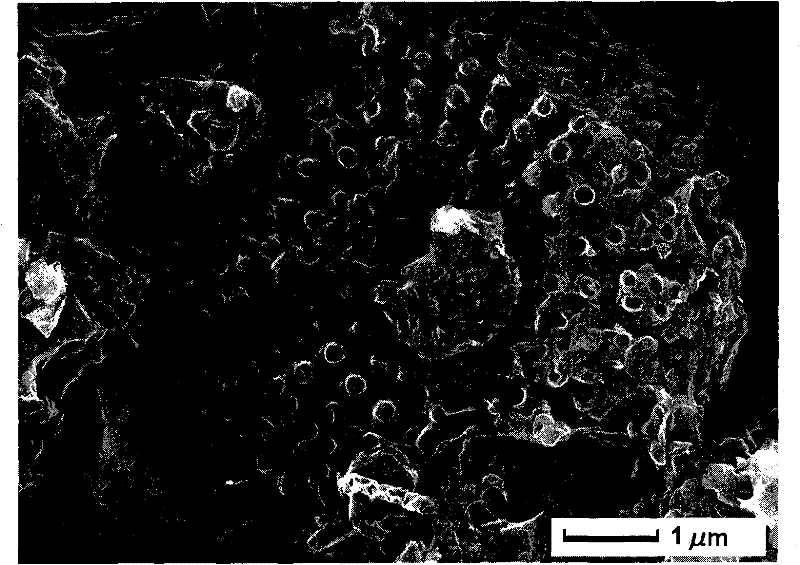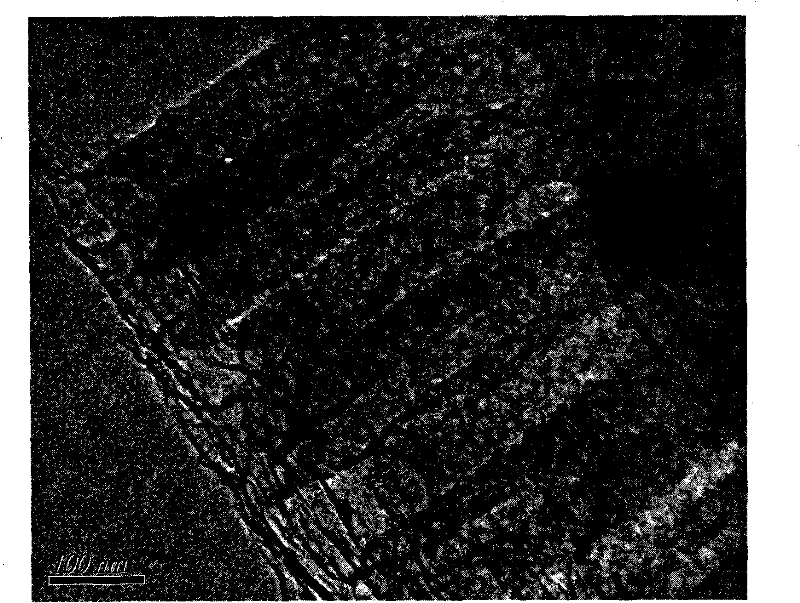Method for preparing porous carbon and white carbon black by using diatomite
A technology of diatomite and porous carbon, applied in the directions of silicon oxide and silicon dioxide, can solve the problems of inefficient utilization of mineral resources and damage to the unique structure of minerals, and achieve the effect of low environmental damage and excellent performance.
- Summary
- Abstract
- Description
- Claims
- Application Information
AI Technical Summary
Problems solved by technology
Method used
Image
Examples
Embodiment 1
[0027] 1) Weigh 5 g of Jilin diatomite raw material purified by sedimentation (the main diatom species is the diatom diatoms of the order Cylindrica) at room temperature and add it to 25 ml of furfuryl alcohol, and fully stir the resulting mixture for 1 hour.
[0028] 2) Then place it in a vacuum drying oven, heat to 95° C. under vacuum, and keep the temperature constant for 24 hours.
[0029] 3) Put the above sample in a tube furnace, raise the temperature to 700° C. under an inert gas atmosphere, and keep the temperature constant for 3 hours.
[0030] 4) Add the cooled solid into 100ml of 1mol / L sodium hydroxide solution, heat to boiling, and keep boiling for 1 hour. After cooling, the suspension was allowed to stand for 24 hours. Centrifugation, washing with water, and re-centrifugation were repeated several times until the pH of the filtrate = 7, and the obtained solid particles and the separated solution were stored separately.
Embodiment 2
[0041] Jilin diatomite treated by thermal activation (calcination at 650°C for 3 hours) was used as template and catalyst. Carry out the preparation of activated carbon according to the step in embodiment 1. The resulting activated carbon has a specific surface area of 406m 2 / g, the total pore volume is 0.348cm 3 / g.
[0042] As an implementation application, the ability of the porous carbon to absorb hydrogen was tested, and the results showed that the hydrogen adsorption capacity of the porous carbon was 0.75wt%, and its hydrogen adsorption-desorption isotherm is shown in the appendix Figure 5 b.
Embodiment 3
[0044] Jilin diatomite treated with acid activation (with 2mol / L hydrochloric acid, according to the liquid / soil ratio of 15ml hydrochloric acid / 1g diatomite) was used as template and catalyst. According to the steps in Example 1, the preparation of activated carbon was carried out. The resulting activated carbon has a specific surface area of 426m 2 / g, the total pore volume is 0.470cm 3 / g.
[0045] As an implementation application, the ability of this porous carbon to absorb hydrogen was tested, and the results showed that the hydrogen adsorption capacity of this porous carbon was 1.0wt%, and its hydrogen adsorption-desorption isotherm is shown in the appendix Figure 5 c.
[0046] As an implementation application, use the generated porous carbon to adsorb 200# gasoline. It is measured that its saturated adsorption capacity is 5.5g gasoline / g porous carbon, which is commercial activated carbon (specific surface area is 1013.2g / m 2 ) 1.7 times.
PUM
| Property | Measurement | Unit |
|---|---|---|
| pore size | aaaaa | aaaaa |
| specific surface area | aaaaa | aaaaa |
| specific surface area | aaaaa | aaaaa |
Abstract
Description
Claims
Application Information
 Login to View More
Login to View More - R&D
- Intellectual Property
- Life Sciences
- Materials
- Tech Scout
- Unparalleled Data Quality
- Higher Quality Content
- 60% Fewer Hallucinations
Browse by: Latest US Patents, China's latest patents, Technical Efficacy Thesaurus, Application Domain, Technology Topic, Popular Technical Reports.
© 2025 PatSnap. All rights reserved.Legal|Privacy policy|Modern Slavery Act Transparency Statement|Sitemap|About US| Contact US: help@patsnap.com



